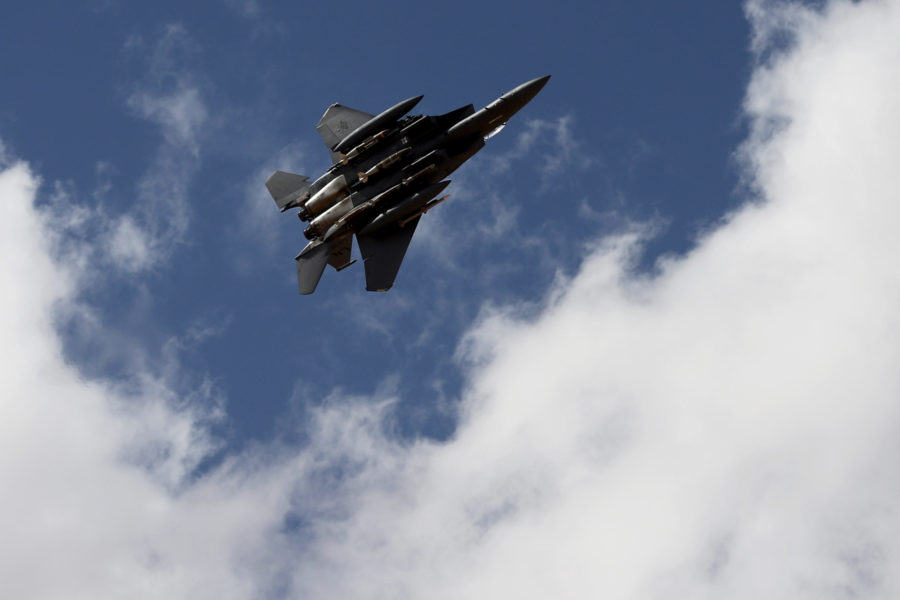Low-rate initial production of the F-15 Eagle Passive Active Warning and Survivability System, or EPAWSS, is underway, BAE Systems announced March 2. The work is being done under a $58 million contract from Boeing.
The EPAWSS will give current and future Eagles more survivability when operating near or in contested airspace. The system allows F-15 pilots to monitor, locate and jam enemy radars, as well as deceive them about the Eagle’s position and heading.
“The system combines multispectral sensors and countermeasures, industry-leading signal processing, microelectronics, and intelligent algorithms to deliver fully integrated radar warning, situational awareness, geo-location and self-protection capabilities,” BAE said in a press release.
The EPAWSS was developed to protect F-15C/D and F-15E Strike Eagle aircraft in USAF’s fleet, and will be standard equipment on new F-15EX models, the first of which is to be delivered to the Air Force in the next few weeks. The company has been working on EPAWSS since 2015, when it was selected for the Technology Maturation and Risk Reduction (TMRR) phase. The engineering and manufacturing development contract followed in 2016.
The LRIP 2 award is expected in fiscal 2022, and full-rate production could come as soon as Lot 3 in fiscal 2023, a BAE spokesman said.
Although the system has already been through a series of ground and flight tests, BAE continues to deliver “incremental updates to the EPAWSS flight software with new geolocation and threat identification capabilities,” the company said. “As a result, system performance continues to improve in ground/flight test and in dense signal environments in hardware-in-the-loop (HiTL) tests” at the Air Force’s Integrated Demonstrations and Applications Laboratory.
The LRIP milestone is “the culmination of years of hard work” by the Boeing, BAE, and the government team, program manager Lt. Col. Dan Carroll said. The EPAWSS will “significantly improve the survivability and utility of the F-15, and will be a great complement to what is already a very capable and lethal aircraft.”
BAE reported that it has invested $100 million “in world-class [electronic warfare] laboratories and factories, and has grown its workforce” in anticipation of the award.
